Sony VPL-XW5000ES Review
An affordable native 4K laser-powered beamer with good HDR tone mapping
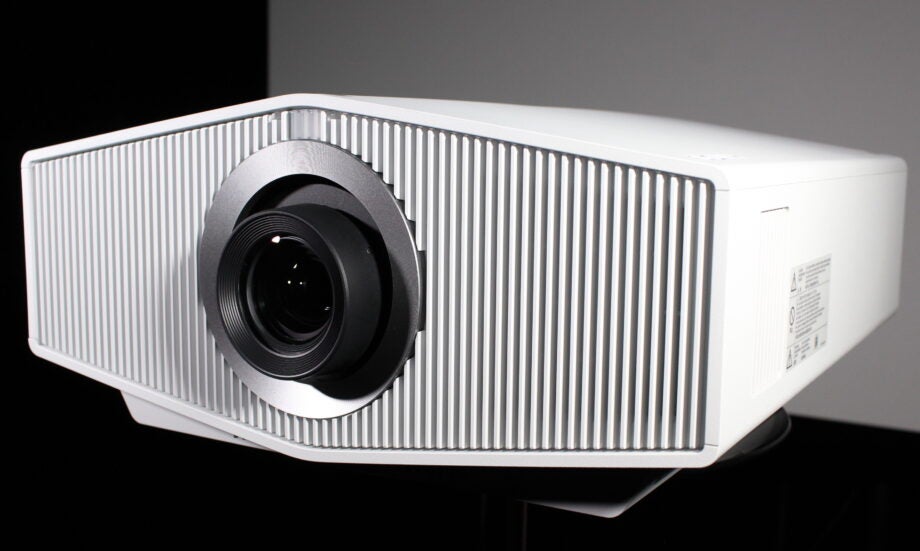

Verdict
This capable big-screen beamer represents the entry-point for native 4K laser projection, with a price less than half its nearest competitor. Sony has cut a few corners to get there, but class-leading processing, fluid motion handling, and a solid HDR performance makes it worth the trip.
Pros
- Native 4K resolution
- Long-life laser light source
- Excellent image processing
- Class-leading motion handling
Cons
- Manual lens controls
- No HDMI 2.1 inputs
- No 3D support
Availability
- UKRRP: £5999
- USARRP: $5999
Key Features
- Native 4KUltra HD 4K (3840 x 2160) SXRD chipset
- Laser light sourceLaser phosphor with a claimed brightness of 2,000 lumens and a lifespan of 20,000 hours
- X1 Ultimate ProcessorSony’s lates test chipset promises advanced image processing and optimisation for projectors
Introduction
While no-one is saying six grand is inexpensive, if you want to avoid pixel-shifting ‘wobulation’ or frame-flashing DLP trickery, the Sony VPL-XW5000ES is one of the most affordable ways to get native 4K projection.
The fact it also has a long-life laser light source, cutting-edge image processing, and class-leading motion handling only makes the investment easier to justify.
The lower price point is partly possible thanks to a new SXRD chipset, but to help keep costs down further, Sony uses a hybrid lens and a redesigned chassis, plus there’s no 3D, HDMI 2.1 or motorised lens controls. So is the Sony VPL-XW5000ES any good, and how does it stack up against alternative options like the Epson EH-LS12000 and JVC DLA-NZ7?
Design
- Hybrid plastic/glass lens
- Manual lens controls
- Choice of black or white
- Backlit remote control
The Sony VPL-XW5000ES doesn’t look wildly different compared to previous projectors from the brand, with a similar angled design, a centrally-mounted lens housed within a grille that covers air intakes for cooling, and exhaust vents at the rear.
The XW5000ES measures 460 x 200 x 472mm (WxHxD), weighs in at 13kg, and comes in choice of matte black or matte white. The build quality is good but nothing special, which is to be expected given Sony is trying to reduce unnecessary costs.
One area where savings have been made is the lens, which is a glass and plastic hybrid. The controls for zoom, shift, and focus are also manual, making precise setup tricky, and precluding lens memories for scope ratio (2.35:1) screens where different settings are required for narrower aspect ratios.
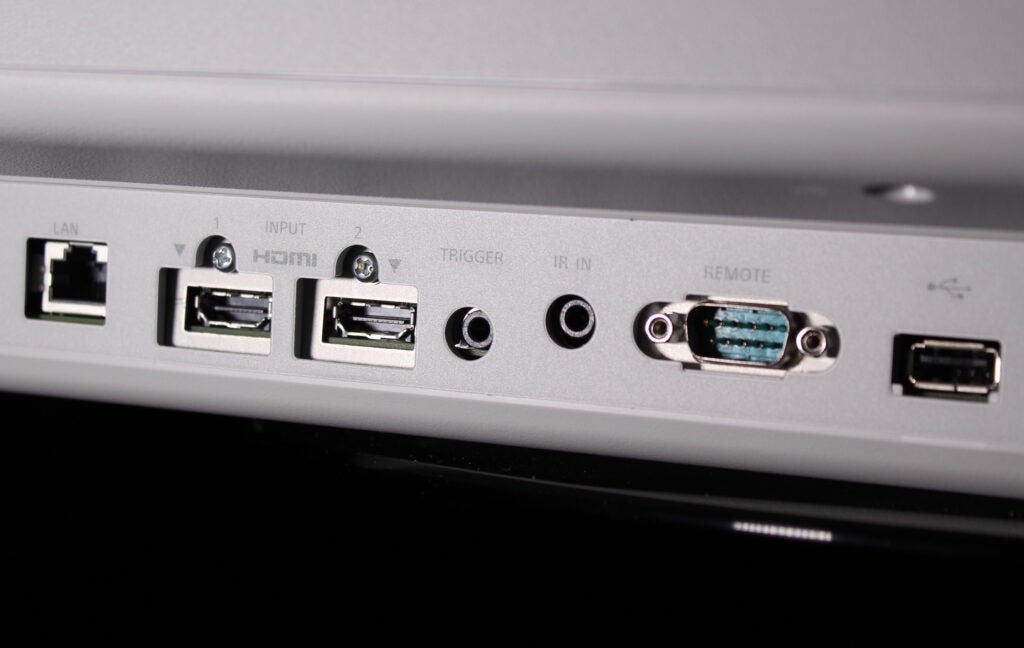
The connections are located in a recessed area along the left hand side as you face the projector, where you’ll find two HDMI 2.0 inputs, an Ethernet port and RS-232C connector, a 12V trigger, an IR input jack, and a USB port for power.
The lack of HDMI 2.1 inputs is disappointing, especially considering the cheaper Epson LS12000 includes them. It’s not a big deal if you’re only into movies, but any next-gen gamers won’t be able to enjoy playing at 4K 120Hz high-frame-rate.
The included remote is fairly large, with a handy backlight for use in the dark. The buttons are sensibly laid out, it’s comfortable to hold and use with one hand, and includes all the controls you’ll need to setup and operate the VPL-XW5000. There are also some basic controls on the side of the projector, just above the connections, which might come in handy if you ever misplace the remote.
Features
- Phosphor laser light source
- 4K (3840 x 2160) SXRD chipset
- X1 Ultimate processor
- Dynamic HDR Enhancer
- IMAX Enhanced
The Sony VPL-XW5000ES uses three of the brand’s new 0.61-inch SXRD chips to deliver native 4K (3840 x 2160) images. The projector has a refresh rate of 120Hz, although due to HDMI limitations this only applies to resolutions up to 2K (1920 x 1080).
The XW5000 also includes a laser phosphor light source, with a claimed peak brightness of 2,000 lumens and claimed lifespan up to 20,000 hours. That basically means you could watch a film a day for the next ten years without worrying about the image dimming like a lamp.
The inclusion of wide dynamic range optics, and Sony’s Triluminos Pro algorithm promises deeper blacks, more saturated colours and improved contrast ratios. Sony’s latest X1 Ultimate processor also offers advanced image processing and realtime optimisation of the picture, which is an undeniable strength of the brand.
There’s also object-based HDR remastering and dynamic HDR enhancement, with support for HDR10, HLG, and even IMAX Enhanced content. Although I have no idea what the latter means, given that IMAX Enhanced content uses the same standards as any other 4K/HDR video content.
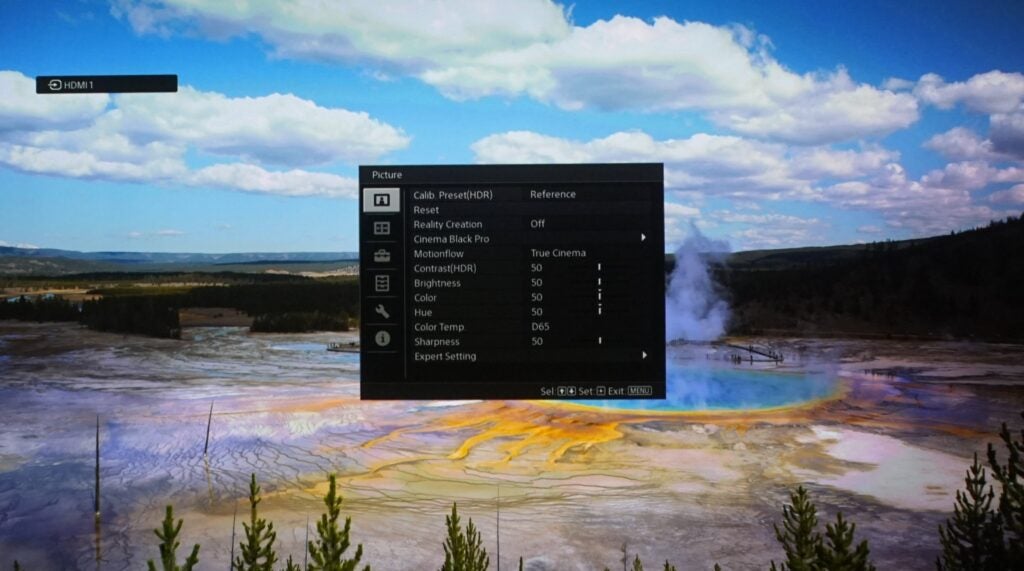
Finally, there’s Motionflow frame interpolation for fast-paced sports action, and a low-latency game mode for a reduced input lag. In the case of the latter, I measured the input lag at anywhere between 12ms and 28ms depending on the frame rate, which is excellent for a projector.
So what’s missing? Well as I mentioned, there are no motorised lens controls and thus no lens memories for wider screens. There’s also no support for 3D, and the lack of HDMI 2.1 support not only means there’s no 4K/120Hz, but also no support for HDR10+ with dynamic metadata.
Performance
- Impressive image processing
- Good HDR tone mapping
- Fluid motion handling
- Very low input lag
The Sony VPL-XW5000ES delivers some genuinely impressive native 4K pictures that contain plenty of detail, while the overall uniformity and geometry is equally good. The laser light source also plays its part, generating sufficient brightness to hold its own on larger screens and in rooms with a lot of ambient light.
The smaller SXRD chipset and hybrid lens result in an image that isn’t as sharp as previous Sony projectors, but Reality Creation detail enhancement applies sharpening so sophisticated that it doesn’t introduce unwanted artefacts, thus improving the perceived resolution and defining details that might otherwise appear soft.
The X1 Ultimate processor is the perfect example of Sony’s imaging prowess. If you send the XW5000 a high quality source, you’ll be rewarded with a picture that makes full use of the projector’s native 4K panel, with upscaling that produces big-screen images that are detailed and free of any unwanted artefacts.
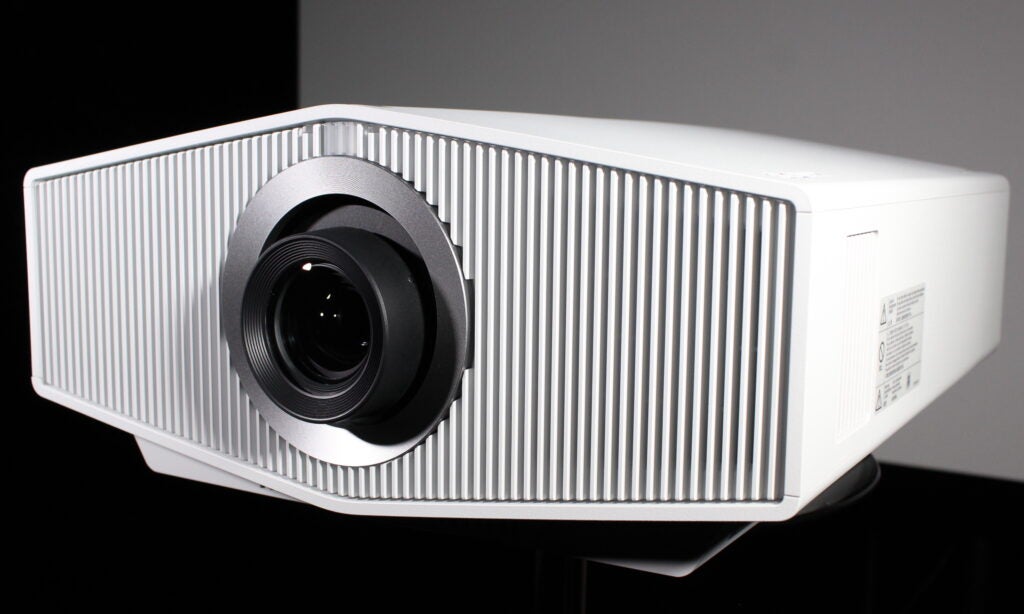
Motion is another Sony strong point, and the XW5000 also proved to be very accomplished in this regard. Watching normal content the motion handling appeared fluid and free of judder or other artefacts, even when Motionflow isn’t engaged, although for fast sports this frame interpolation feature can be beneficial. If you’re a movie fan the True Theatre mode is your best bet, because it retains the 24 frames per a second that’s crucial to the look of film.
The Reference mode is the most accurate out-of-the-box setting in terms of the industry standards, although If you’re looking for a bit more impact you could use the Bright Cinema picture mode. However, this setting is not as accurate as the Reference mode, resulting in bluer whites and more saturated colours.
There are settings to adjust the laser brightness, and the Dynamic Control manipulates contrast. This can improve some darker scenes at the expense of brightness, but this does tend to crush shadow details. If this projector has one weakness it’s the black levels, and while certainly better than LCD and DLP projectors, the Sony struggles to reach the inky blacks of the JVCs, appearing a dark grey in comparison.
There’s support for HDR10 and HLG, but not HDR10+ due to the lack of HDMI 2.1 inputs, putting this projector at a disadvantage to the Epson and JVC beamers, which support the dynamic metadata format. Sony claims the wide dynamic range optics can reach 95% of DCI-P3, but the XW5000 only hit 83% in my tests. However, the greyscale and colour accuracy are both good, and the tone mapping precisely tracks the industry target.
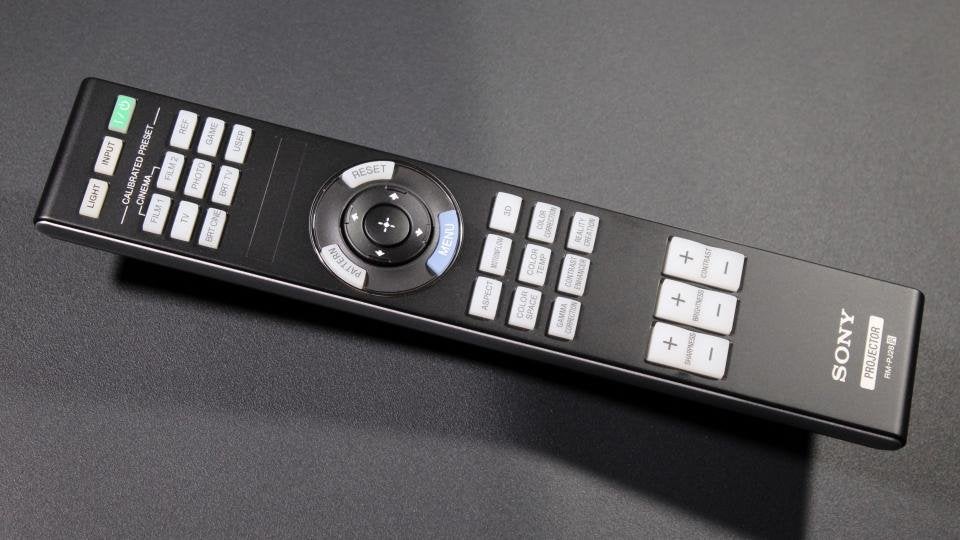
Sony’s Dynamic HDR Enhancer is its version of JVC’s dynamic tone mapping, and uses frame-by-frame analysis of the incoming HDR signal to adjust the tone mapping dynamically through pixel processing and the power of the laser light source. The results can be good, but getting the best HDR images often requires a bit of tweaking.
The XW5000 looks great with brighter HDR content, where the combination of the laser light source and effective tone mapping deliver punchy and detailed pictures. The sun-bleached desert vistas in Dune look very detailed, with no clipping in the highlights, while the snowy landscapes in The Revenant really pop as sunlight glints off the ice.
The XW5000 may have a limited gamut, but it handled the deliberately exaggerated colours of Pixar’s Inside Out extremely well, and when combined with the bright highlights and precise tone mapping the images really popped. However, when it comes to darker scenes the Sony can struggle, and it sometimes failed to pick out all the shadow detail in The Batman’s dark and rain-soaked photography.
This projector is certified for IMAX Enhanced viewing, but when I put on the IMAX Enhanced 4K disc of Zombieland: Double Tap, it didn’t automatically engage the IMAX Enhanced mode and I had to select it manually. In direct comparison with the Reference mode, the two looked identical, which makes sense when you realise that all 4K content uses the same set of standards. File under marketing gimmick.
Finally, the Sony VPL-XW5000ES is an excellent projector for gamers, which makes the lack of 4K 120Hz support all the more disappointing. Thanks to its bright pictures, detailed imaging, and excellent motion handling, this beamer delivers an enjoyable gaming experience. The performance with both SDR and HDR is good, and in the dedicated game mode the overall game play is buttery smooth and highly responsive.
Latest deals
Should you buy it?
You want native 4K images: There is no other laser-powered projector at this price point that can display native 4K content without resorting to image manipulation.
You want to game at high frame rate: The lack of HDMI 2.1 inputs means that despite being able to support higher frames, the XW5000 can’t display games at 4K/120Hz.
Final Thoughts
The Sony VPL-XW5000ES not only offers a native 4K resolution, a laser light source and some cutting-edge image processing, but also HDR that pops with bright and saturated colours, peerless motion handling, and a low input lag to ensure fun and responsive gaming.
The problem is that while the cheaper Epson EH-LS12000 might not be native 4K, you probably won’t notice the difference, and it also uses a laser light source. In addition, it includes motorised lens controls, lens memories, and HDMI 2.1 inputs with support for HDR10+ and 4K 120Hz.
On the other hand, if you’ve got your heart set on a native 4K laser beamer, the only alternative is the JVC DLA-NZ7, which is over twice the price. So if you’re not using a wider screen, you’re not bothered about 3D, and you’re not a gamer, the XW5000ES starts to make a lot of sense.
How we test
We test every projector we review thoroughly over an extended period of time. We use industry standard tests to compare features properly. We’ll always tell you what we find. We never, ever, accept money to review a product.
Find out more about how we test in our ethics policy.
Tested for more than a week
Benchmarked with tests
Tested with real world use
FAQs
Both projectors bears similar technology under their covers, but the XW7000 features a longer throw ratio, higher brightness in lumens and uses more power when it is in operation. It’s also more expensive than the XW5000.
Full specs
Sustainability
Trusted Reviews’ holds the fact that global warming is not a myth as a core value and will continuously endeavour to help protect our planet from harm in its business practices.
As part of this mission, whenever we review a product we send the company a series of questions to help us gauge and make transparent the impact the device has on the environment.
We currently haven’t received answers to the questions on this product, but will update this page the moment we do. You can see a detailed breakdown of the questions we ask and








